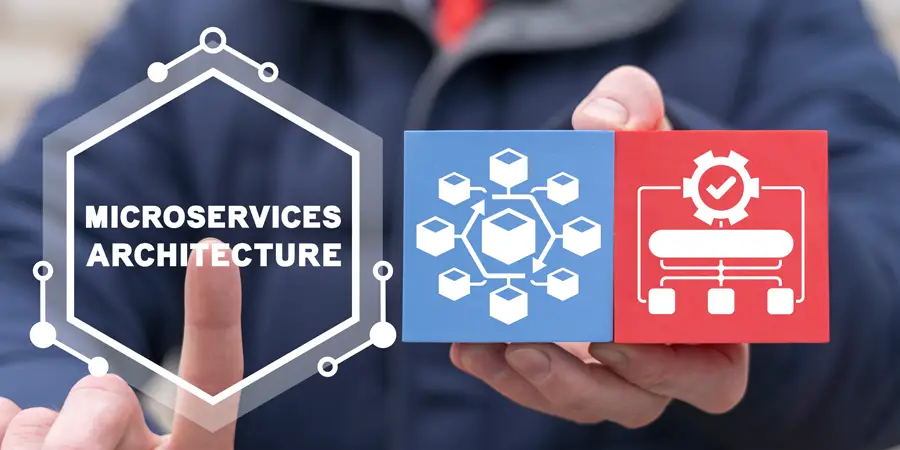Microservices in Full Stack: Building Agile, Scalable Systems


In the current rapid paced technical environment, the demand for agile and scalable systems is very crucial. Though traditional monolithic architectures were simpler to develop, they often encountered challenges and difficulties as applications become more intricate and increase its user base. Microservices architecture has played a greater role in resolving these issues. It disintegrates the application into smaller, self-contained services, presenting a paradigm that boosts agility, scalability, and ease of maintenance. Let’s take a deep dive into microservices within the realm of full stack development, investigating their role in constructing resilient systems.
Understanding Microservices
Microservices architecture involves decoupling an application into loosely coupled services each of which is responsible for a specific business function. In contrast to monolithic structure, where all components are tightly interconnected and interdependent, microservices operate autonomously. This independence fosters a modular development approach, enabling each service to be developed, deployed, and scaled independently.
Key Characteristics of Microservices:
• Service Independence: Each microservice functions as a standalone entity that can be developed, tested, deployed, and scaled independently.
• Decentralized Data Management: Microservices typically handle their own data, promoting autonomy and minimizing the reliance on a central database.
• Technology Heterogeneity: Various services have the flexibility to utilize different technologies, facilitating the adoption of optimal tools for particular tasks.
• Fault Isolation: All the services function independent of one another. Hence the failure of any of the service does not have much impact on the functionality of others thus system resilience. • Continuous Delivery and Deployment: Microservices support continuous integration and continuous deployment (CI/CD), enabling swift and frequent updates.
Merits of Microservices:
• Modularity: Microservices are designed in modular fashion. Services are developed and maintained independently so that it can be replaced or updated without affecting the whole application.
• Scalability: Microservices are designed to be horizontally scalable so that more instances of services can be added according to increased demand. It enables it to handle large volumes of requests and to distribute load evenly.
• Resiliency: They are designed to be resilient to failures and recover quickly from error or crashes. It is done using techniques like retrying failed requests, circuit breakers etc
• Security: It is designed to authenticate or authorize requests from other services, handling sensitive data and protection against threats like SQL injections or cross-site scripting.
• Monitoring: they are easy to monitor using tools like APM (application Performance Monitoring) and distributed tracing.
Demerits of Microservices:
• Complexity: As the number of microservices grows, the manageability of the application becomes harder.
• Data Consistency: As the number of services increases, data consistency maintenance become more complicated between microservices.
• Network Latency: The more services added and network calls increased, the network communication between services brings more latency. It can overcome by improving communication protocols and minimizing frequent service calls.
• Testing: Testing the microservices application is more complex than testing the monolith. Each service must be tested individually and also tested when integrated with other services. • Deployment Overhead: When the demand grows, deploying many services will become an overhead. The deployment can be carried out on regular basis by automating it by CI/CD pipelines.
Best Approaches for Implementing Microservices
• Differentiate your microservices from your business functions and services. It will help you avoid building microservices that are either too large or too small. If the former happens, then you won’t get the advantages from utilizing the microservice architecture at all. If the latter happens to be true, then the rise in operational costs will be orders of magnitude higher than any benefits obtained.
• Design your services so they are loosely coupled, highly cohesive, and relate to a single bounded context. A loosely coupled service is one that has a minimum degree of dependence on other services. High cohesion implies that the service has a well-defined scope and has been designed to carry out only a handful of cohesive duties.
• Communicating between services via APIs and events: When it comes to service-to-service calls, the services should not call each other directly. Rather, create an API gateway, which deals with authentication, request, and response as well as throttling, to regulate services.
• Recognize probable security vulnerabilities in a microservice architecture: By implementing the DevSecOps model to provide a secure microservice environment. It should be noted that microservices are in general more prone to attack vectors sensitive due to their decentralized nature.
• Keep a version control strategy per service: Allow each service to have its repository and supply it when the service is cloned. However, use this repository rarely, try not to push any changes or commits. Fill the version control logs only with the majority of the commit, keeping it clean .
• All the services we expose must have backward compatibility: Any service exposed breaks no callers. Use verbose contract tests. The unbiased of the test is to protect ourselves from breaking changes.
Future of Microservices
The trend towards microservices adoption is on the rise as organizations and leading academic institutes for instance The NorthCap University, Gurugram increasingly acknowledge their advantages. Emerging trends in microservices include:
• Service Mesh: Service mesh technologies like Istio provide advanced features for managing microservices, including traffic management, security, and observability.
• Serverless Computing: Serverless architectures, where functions are executed in response to events, can complement microservices by reducing the operational overhead of managing infrastructure.
• AI and Machine Learning: Integrating AI and machine learning with microservices can enhance automation and decision-making, leading to smarter and more efficient systems.
Conclusion
Microservices architecture represents a significant shift in how we design and build full stack applications. By breaking down monolithic applications into smaller, independent services, microservices offer a modular, scalable, and resilient approach to development. While the transition to microservices introduces new challenges, the benefits in terms of agility, scalability, and maintainability are substantial. Many big organizations like Netflix, Amazon, Uber have demonstrated the power of microservices in handling complex, large-scale applications. By following best practices and leveraging emerging technologies, businesses can harness the full potential of microservices to build agile, scalable systems that meet the demands of today’s dynamic technological landscape.
Authored By
Ms. Kanika Gupta
Assistant Professor
Department of CSE
LinkedIn: www.linkedin.com/in/kanikagupta-ncu
Visit for more details: https://www.ncuindia.edu/school/department-of-cse/#ug-programmes














